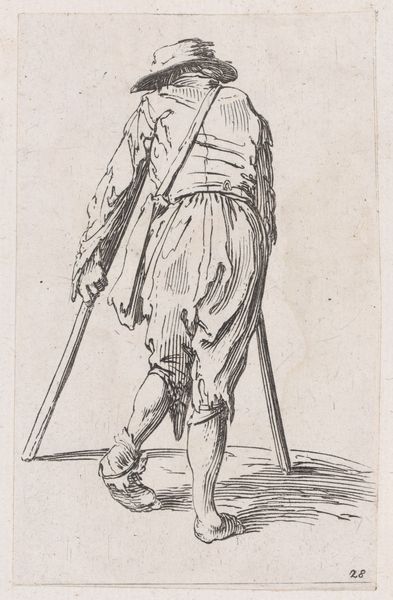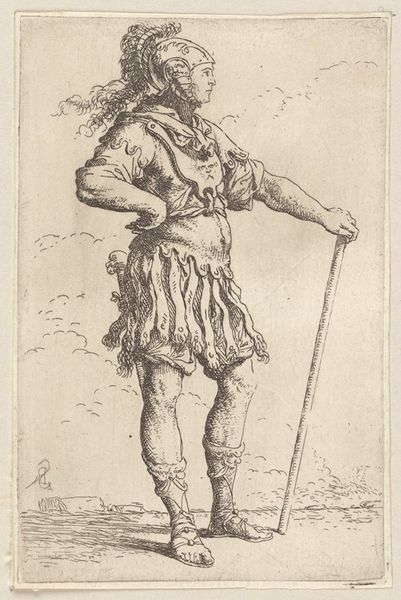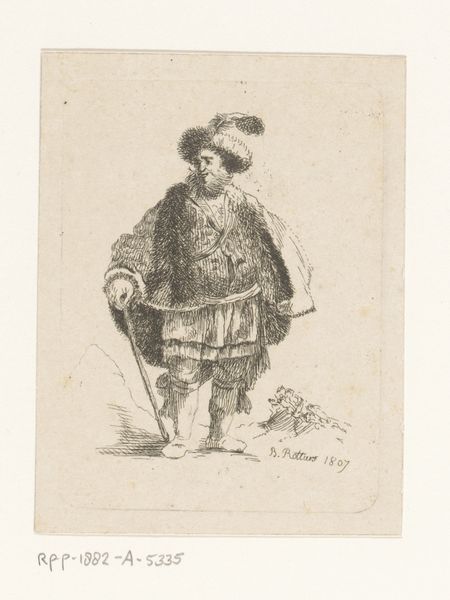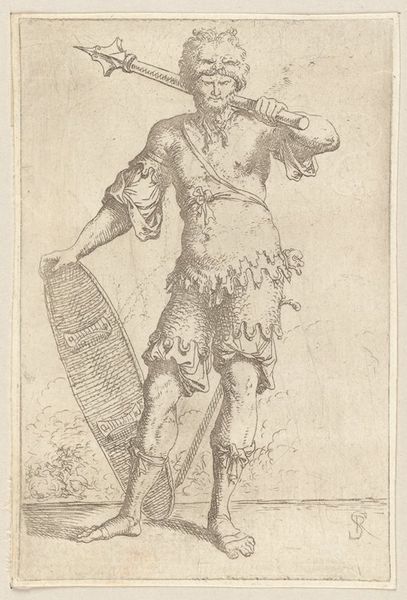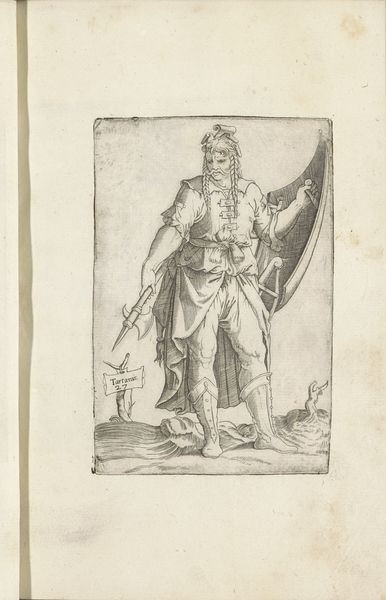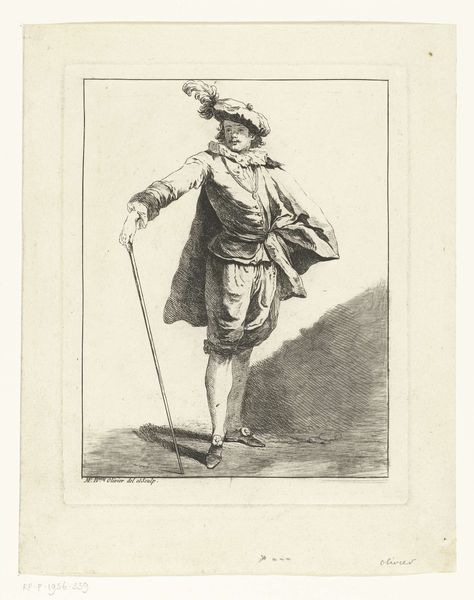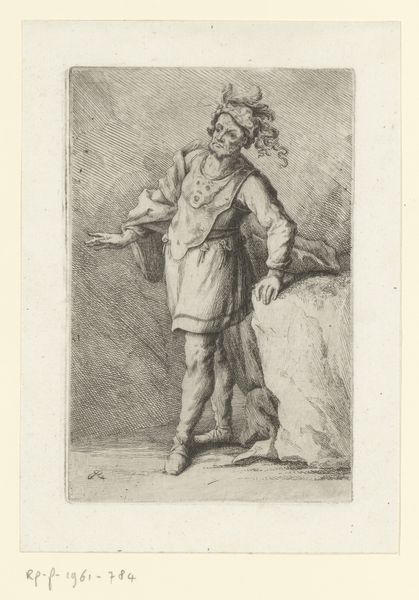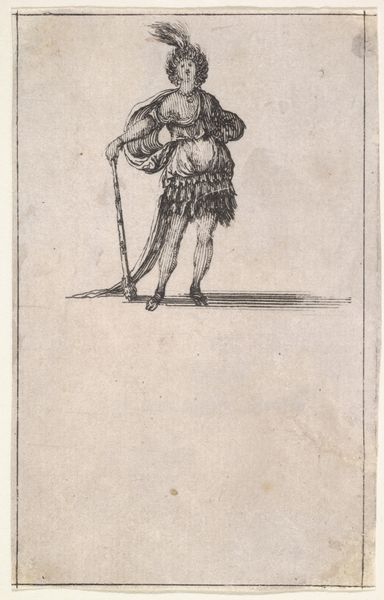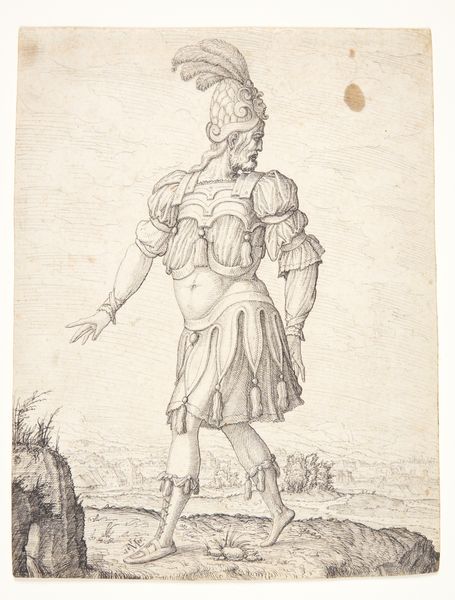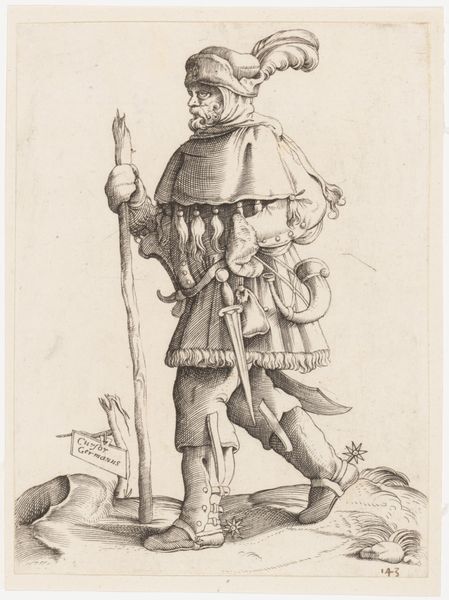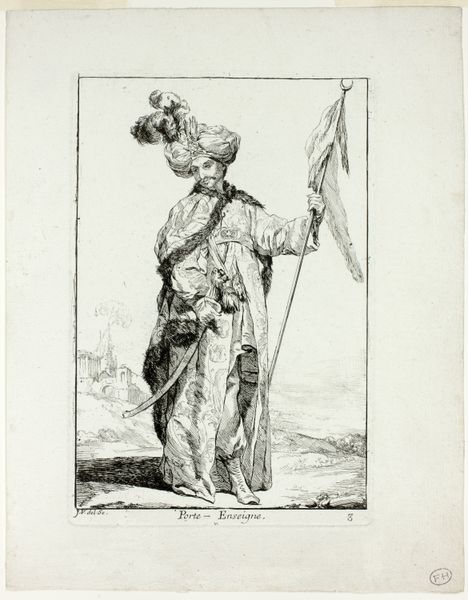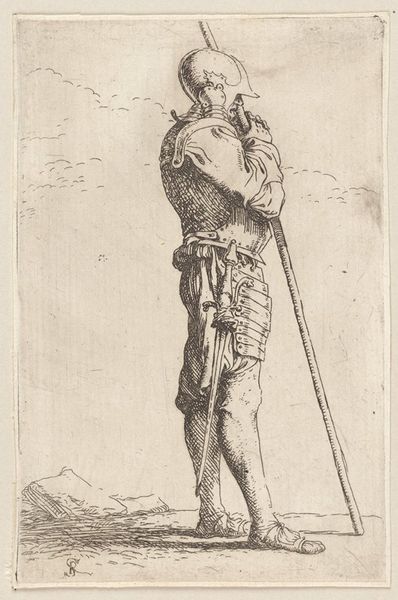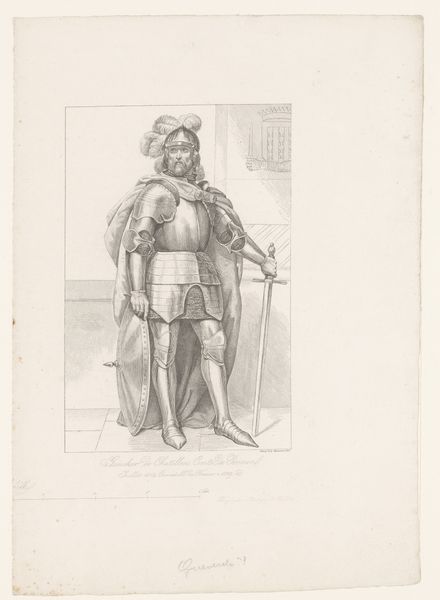
print, engraving
#
portrait
#
baroque
# print
#
old engraving style
#
figuration
#
genre-painting
#
engraving
Dimensions: height 184 mm, width 120 mm
Copyright: Rijks Museum: Open Domain
Curator: Let’s examine “Standing Warrior with Axe,” an engraving from 1728 by Johann Elias Ridinger, here at the Rijksmuseum. My first impression is its rather static composition feels like a staged representation rather than something capturing the vitality of military prowess. What do you see? Editor: It definitely lacks dynamism! I see a curious portrayal of power through a distinctly European lens. Look at this figure, ostensibly a warrior. How does Ridinger depict the warrior's identity, especially considering prevailing social hierarchies of the time? Is this Romanticizing, an idealizing, or something more complex? Curator: Focusing on materials, it is remarkable how much detail is achieved through the relatively simple medium of engraving. The linear quality and the textures suggested through cross-hatching create an almost photographic effect despite the limitations. Notice the subtle tonal gradations around his torso! Editor: True, but let's unpack this "warrior." His clothing appears vaguely "exotic" yet still falls squarely into the tradition of European depictions of non-European men as both powerful and othered, even submissive. Think about how concepts of race and colonialism shape our reading of his posture, his weaponry, and his presentation. Curator: I see him more as a character in a staged drama than a concrete social representation, or even some claim to social truth. I'm interested in how Ridinger made practical use of copper and acid in an alchemical way. We should analyze printmaking traditions! Editor: Fair point! Still, we can't ignore how that approach flattens real identities and socio-political structures in its construction of generalized “types” rooted in European-centrism. What happens to history, lived experiences, and the complex relations of power when someone is merely rendered a "type"? Curator: You suggest a compelling analysis. Focusing purely on technique may obscure something beyond production, something deeper! Editor: Exactly! By addressing power and representation in relation to aesthetics and print, we start to reveal a very dynamic view of 18th century ideologies. Curator: That gives me much to contemplate. Editor: Indeed, the engraving is richer the more it can be interpreted.
Comments
No comments
Be the first to comment and join the conversation on the ultimate creative platform.

